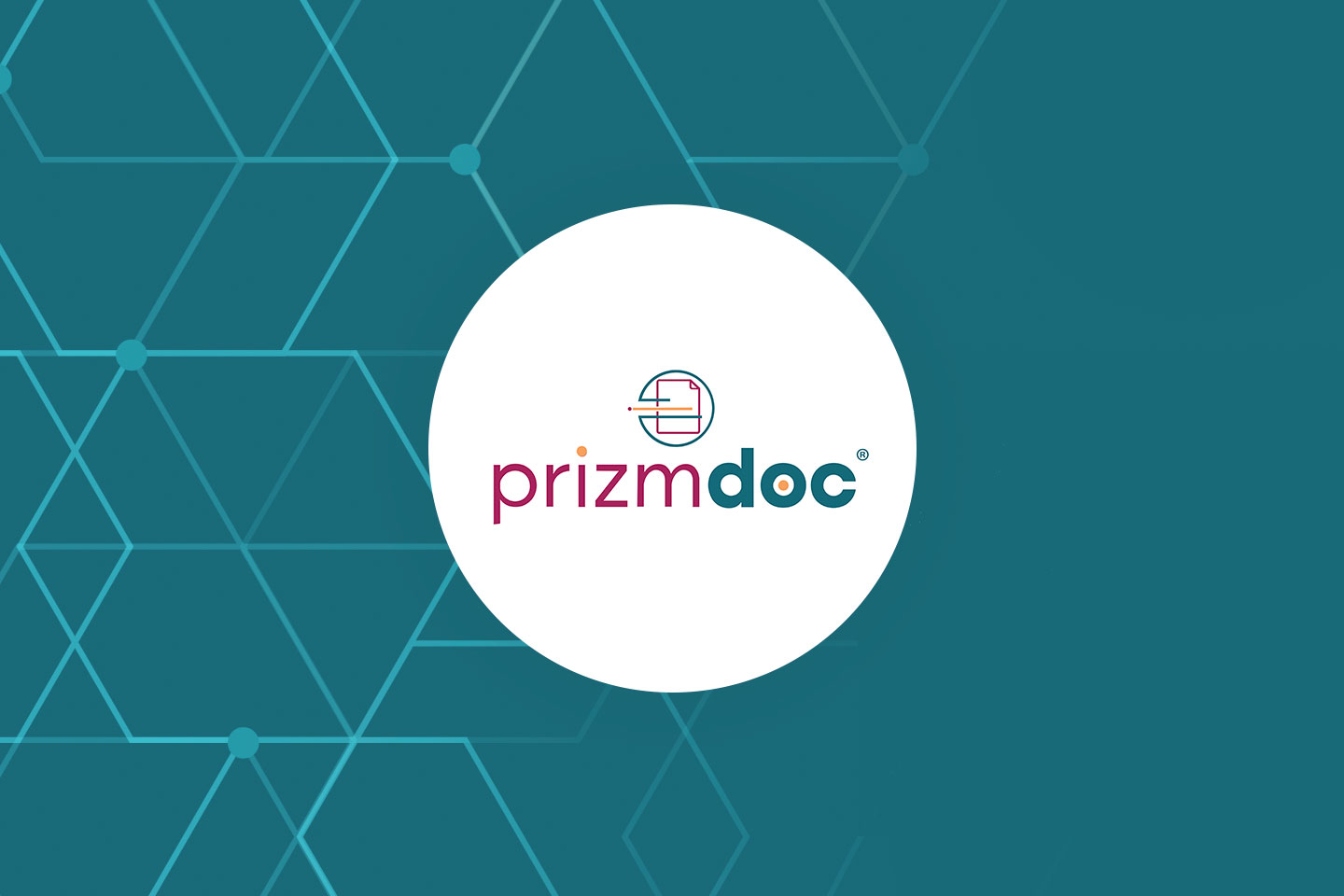Technical FAQs for "PrizmDoc Editor"

Document management can be a challenge for any organization, and law firms and legal departments are no exception. In fact, a recent Annual Law Department Operations Survey, found that “improving business processes” is the number one challenge for legal operations professionals in the era of digital transformation.
Most law firms have begun the move to a digital means of processing paper, managing case files, and securely collaborating on documents. But with mountains of paperwork that must be securely stored and easily located, making the leap to digital is no small feat.
In attempt to manage case files in a more efficient, cost-effective manner, some companies are implementing legal application software. Unfortunately, these platforms can be quite limited on their own. Often, the integration of document viewing and collaboration APIs into legal software is needed to help law firms and legal departments streamline processes without disrupting current case work.
Understanding the Challenges of Legal Document Management
CMS Wire’s 2019 State of the Digital Workplace named document management the most valuable digital office tool — beating out microservices, artificial intelligence, and other emerging technology. However, when asked how their document management systems were performing, only 12 percent of respondents said it was working well.
So, why are most document management systems providing such lackluster results? Often, the solutions simply aren’t able to address all of the complexities of managing the legal document workload. Let’s break down some of the most common issues law offices are facing when it comes to case file management:
Document Capture and Organization
Many firms are struggling to manage a tidal wave of paperwork coming their way via email and text, and thanks to smartphone cameras and other digital tools, these documents can also consist of .TIFF,.JPG, PDF, or raster files.
Even paper forms can cause problems if they aren’t converted into digital formats. When law firms are filing affidavits or witness statements as paper files without backing them up electronically, they can easily be miscategorized or misplaced.
For legal organizations struggling with a variety of document formats, Above The Law recommends focusing first on information management in order to find an effective way of saving, searching, and working on multi-format documents.
Security
As CMSWire points out, “Security is, and will always be, a concern regarding legal documentation.” If legal documents are corrupted, altered, or deleted due to a cyberattack or human error, serious repercussions, even bankruptcy, can result.
These issues can seem insurmountable for legal organizations with thousands of files spread out across multiple storage locations and formats. If legal teams aren’t able to audit, search, and view files on-demand, they could face legal challenges, fines, or loss of reputation.
eDiscovery
Proper discovery during a case includes maintaining files in a way that makes information easily searchable and viewable. The eDiscovery process requires a wide-ranging search through operational and organizational data across multiple sources. Keyword-driven, full-text searches simplify this process by quickly identifying relevant documents. Document-viewer interactivity also makes it easier for attorneys to determine context and confidently include or exclude files.
What to Look For in a Solution
In order to improve document management, legal departments need a more tailored solution that provides a better user experience; one that operates more like their preferred consumer applications (think Amazon and Google) and can be quickly put to use with minimal training. Solutions should also feature a clean, modern interface that can be accessed on any device, including personal computers, tablets, and smartphones.
To avoid compliance challenges, the best options should also include advanced document search, editing, and viewing capabilities driven by best-in-class APIs designed to work with existing databases and tools. These integrations can help ensure chain of custody, quickly locate documents, and redact critical information, so that law offices can meet regulatory obligations without damaging the client experience.
Unfortunately, most legal applications don’t include custom document management functionality. When it comes to building a tailor made solution, a good place to start is by talking with your current vendor about embedding secure, standards-based APIs and proven SDKs into existing platforms. Once those capabilities are in place, your legal organization should have a much easier time streamlining processes without disrupting current case work.
 Document automation is a challenge most organizations face whether they realize it or not. Many teams end up collaborating through means of emailing, downloading, scanning, etc. In addition, some teams simply navigate through multiple programs and shared drives to accomplish tasks. While all of these options may seem like tried and true processes, wouldn’t it be easier if it could all happen in one secure place?
Document automation is a challenge most organizations face whether they realize it or not. Many teams end up collaborating through means of emailing, downloading, scanning, etc. In addition, some teams simply navigate through multiple programs and shared drives to accomplish tasks. While all of these options may seem like tried and true processes, wouldn’t it be easier if it could all happen in one secure place?
That’s where Accusoft’s PrizmDoc™ Suite comes in. Our solutions enable organizations to integrate our document viewer and editor into their own applications with ease. Through a collection of UI components and content manipulation APIs, PrizmDoc Suite helps web developers embed document viewing, editing, processing, and conversion into their applications. Our functionality integrates on the client and server side smoothly, creating a seamless experience for both you and your users.
If you have development resource or bandwidth constraints, let Accusoft be a part of your team. We have enablement services to help you speed things up. Let’s talk through how our team of experts can get your application up and running smoothly in no time.
Help Us Help You
It doesn’t matter what PrizmDoc product you need help integrating. We have you covered. Our PrizmDoc Suite Enablement Services help your team determine the best implementation approach to get your application up and running faster.
We start the process by discussing your feature requirements. What parts of our PrizmDoc Suite matter most to your organization? We want to understand your system architecture to provide the best service possible. So, we’ll be asking you questions like: “How will this product be used?” This helps us provide the best options for your specific organization.
Ease into Integration
First, we perform system analysis, considering factors like system architecture, server environment, data workflow, and more. Detailed instructions will follow, including assistance with planning and architecting solutions for your organization’s best performance.
Once we develop a plan, it’s time to train your team. We customize our training to your specific needs. Our goal is to create a strong foundation for future development and ongoing system maintenance. With our enablement training, your team will receive targeted guidance for creative feature implementation. We’ll focus on your organization’s unique challenges and deliver a training that makes the most sense for you.
We’d be happy to train your team on-site, but if that’s not possible, we’ll gladly set up remote training as well. We recommend that you bring multiple developers from your team to the training to enable open communication between our teams.
After It’s All Said and Done
Our customer service doesn’t end here. Accusoft offers an added full-support option for organizations that need ongoing assistance. You’ll receive free Upgrade Support for 90 days after your initial purchase, which includes email support and all product upgrades.
Customers wanting longer-term support may choose to extend Upgrade Support, or to move to Priority or Expedited support. Our support plans range from availability via email to 24/7 on call support. We value your partnership, and strive to provide the best possible customer service available.
Learn more about our enablement services in our fact sheet.

“How long will this take to test?” is a dreaded but important question constantly asked when planning out releases and product updates. “How long will this take to manually test?” is an even scarier question. It seems almost impossible to answer if you do not have previous test suite runs to make an estimate against. Ideally, you would have very little manual validation on a product/project; however, there are situations where more is inescapable. To help with estimating the manual testing effort, I have created the following guide.
Step 1: Map Out the Product
The first step may seem pretty obvious, but it will definitely help in identifying the level of testing effort: “Map out the product.” You need to know your product and understand how it works in order to get a good idea of just how much testing needs to take place. You also need to know the maturity of the product and exactly where you are in the release cycle.
Questions you need to answer in order to focus your testing intentions:
- What should your current testing be focused on? For example, the functionality that is changing in this release vs functionality that has not been changed.
- Where is the product in the development cycle?
- What is the desired roadmap for the project?
Manual testing will usually be done at the top level. Some things you may need to know in order to estimate testing efforts are:
- How the UI is supposed to look and work (visual and functional tests)
- How the product is supposed to run (performance tests)
- The capacity the product is supposed to be able to handle (stress tests)
- Possible security concerns that the product could have (security testing)
- Possible workflows specific to the product and how various bits of functionality interact with each other
Lower-level testing is usually automated because it’s fairly simple to add to the product during development. Most likely understanding of these aspects of the product is not needed in order to estimate manual effort, but may help in understanding how the product works:
- The interaction of the various components of the product (integration tests, API tests)
- The various components of the product themselves (unit testing)
- The structure of the components of the product
Step 2: Plan the Testing
Once you have mapped out the product, it’s time for you to start planning out the test cases. You have an idea of what the product is doing and how it may need to be tested, so put your ideas together into an action plan.
You need to understand the testing needs; this includes unit testing, integration tests, API tests, functional tests, visual tests, security tests, performance/stress tests, product level tests, and smoke tests. For each category, you need to decide if the testing will be manual, automated, or a mixture. This decision will depend upon your own product and your team’s expertise.
In order to decide what may be automated, you will need to get an idea of the current test coverage and the amount of test coverage needed. Ask yourself how the automation will be built and if it would be simpler to manually test the task at hand. Get a list/plan put together for exactly what type of testing needs to be done and how much of it. For the automated side, you don’t necessarily have to make an automation plan right away, simply knowing what can be covered by automation and pointing it out can help you.
Step 3: Estimate the Total Time to Test
For estimating manual testing effort, you need to get an idea of the scope of the project as well as the expertise of the man-power that will be driving the manual testing (those familiar with the product/process versus those completely new). While completely new people may be slower, they may be more diligent and notice issues that those familiar with the system may look past or explain away. Newer testers may take more time looking up issues to see if they’re already reported, causing a larger time estimate. However, this can lead to discovering more issues that familiar testers might assume are already logged without looking them up.
From the information you have gathered in Step 1 and identifying what will be automated, you can create a test plan of attack. My suggestion would be to go through each feature that needs to be tested (including workflows and functionality that may be linked to other functionality) and assign an effort score of 1-10.
The following table outlines some of the functionality that would need to be tested in our PrizmDoc Editor product:
Once you have an effort score on everything, you can make an effort-to-hours table. This does not have to be exact and can be adjusted per functionality. This is because effort does not always correlate directly to hours, but can be helpful for a starting point. Below is an example of the effort-to-hours table:
Now you can map out the approximate time it will take to test each part of the product. As you can see in the table below, some of the effort-to-hours estimations are the same as the table made above, but some are smaller or larger based on personal knowledge of the product and how long such an effort could take. There is no secret formula to this. It’s just a gut feeling that you can base off of current knowledge of the system, historical data (if you have data from previous testing efforts), and the estimated effort-to-hours table you created.
Finally, you can total up your approximations to get a grand estimation of person-hours it will take to manually test the product.
Note: As with all time estimations in software engineering, buffer time should be applied. What you have estimated up to this point is your “ScottyTime”. What you want to communicate is your “KirkTime”. KirkTime = (ScottyTime * 3). This will make sure that there is time for any road-bumps or extra exploration that may need to be done.
In summary, estimating testing effort is not the easiest task. Estimating time is variable in nature and can be difficult to get down to an exact science. The good news is that with this guide and collecting data on how long testing takes each time you test the same product, answering the dreaded question will become easier. You will no longer have to fear when someone asks, “How long will this take to test?”
Document management security is essential for keeping company information private and secure. However, not all businesses maintain an ongoing document management process with their employees.
According to LBMC Technology Solutions, “Efficient document management involves having a well-written, strong, and clear policy as well as a computer system (or in some cases several systems) that can index information for easy retrieval and allow for varying levels of security in accessing the documents.”
Recent research from ComputerWorld shows that the average organization shares documents with 826 external domains, which include corporate business partners and personal email addresses. It’s obvious that with so much information shared internally and externally, document security is a huge risk for businesses of any size.
Accusoft’s recent survey of 100 IT managers and 250 full-time employees from the U.S. showed interesting results, represented in the infographic below.

Given these statistics, it’s important to evaluate your own document management security policies to ensure privacy for your data and your company.
Get the Full Report — FREE
For more information on document awareness gaps, please download our full data study, Closing the Document Management Awareness Gap, which includes many more insights on document security.

In a recent LegalTech article, Lisa Senger highlighted some of the concerns facing law firms in an age when legal document management is becoming increasingly digital. Collaborating with colleagues and sharing information with opposing counsel can put confidential client information at risk. As the need for increased security rises, developers are under pressure to meet the demands of their clients and ensure the safe and confidential transfer of information over a variety of networks outside of the organization.
To save the money and effort it takes to develop and stay up-to-date on the latest software for security, many developers are looking to third-party providers, like Accusoft, to supply the latest solutions for document confidentiality and security.
Redaction
The easiest way to preserve the confidentiality of your end users’ clients is to eliminate the confidential information. When text is selected and redacted from a document, the redactions are burned into the new saved version, eliminating the confidential data from the file before it is shared with a third party. With auto-redaction, eDiscovery is less burdensome on law firms, allowing them to find repeated instances of confidential information—like a social security number—and redact it throughout a document automatically.
Digital Rights Management
When sharing client information outside of the firm, your clients are worried about that information being stolen or otherwise misused. For instance, after a case is over, opposing counsel may not delete files in a timely manner, putting confidential information at greater risk. With DRM, you can control who sees which files, and for how long. DRM software allows you to assign permissions to view, print, and download files and documents. After a case is over, you can simply revoke permission to access the document to ensure users cannot view confidential client information longer than necessary.
Finding a Third-Party Software Provider
Third-party code libraries are everywhere these days, and there are many companies offering redaction and DRM tools. But just because you found something great on GitHub doesn’t mean it’s without risk to you and your business. If you’re thinking about using third-party code in your applications, here are some important factors to consider:
- Security: Recent hacks of retail giants like Target and Home Depot have put cybersecurity in the spotlight recently. You need to be able to make sure the product you integrate into your software comes from a safe and reliable provider. Do your due diligence and make sure the company you choose meets your security needs.
- Versatility: Is it the best solution for your business? Don’t purchase software that doesn’t meet your needs. The toolkits you use should be flexible enough to do what you need them to do, even if you change your application. Finding software that is updated regularly with the newest features will let your applications grow without needing major revamps.
- Support: Documentation, maintenance, stability, and tech support are all important factors when sourcing your third-party code provider. Does the software support your framework and platform? Make sure the product you choose has the right documentation to allow you to implement the tool quickly and easily. Do the developers provide support? They should. Your provider should be able to answer any questions you have about their product.
The key to making third-party code work for you and your business is setting and maintaining high standards. Make sure the code you choose to integrate into your applications is something you would be happy to see coming out of your own department.
Are you developing a legal application? Check out PrizmDoc

| Time Creating new tools and developing new software is time-intensive. Many times, developers are under tight deadlines to improve their products and add new features for quick turnarounds. Responding to competitor upgrades, adding a new capability requested by a top client, or putting out a new release requires developers to be able to stay on top of their game in terms of the latest and greatest tools. Third-party SDKs and toolkits allow developers to access the newest software quickly, decreasing the time to market for their applications.Finding the right provider Third-party code libraries are everywhere these days. But just because you found something great on GitHub doesn’t mean it’s without risk to you and your business. If you’re thinking about using third-party code in your applications, here are some important factors to consider:
The key to making third-party code work for you and your business is setting and maintaining high standards. Make sure the code you choose to integrate into your applications is something you would be happy to see coming out of your own department. Accusoft provides a variety of versatile and secure SDK and product suite solutions for adding document management to your existing framework. Learn more. |